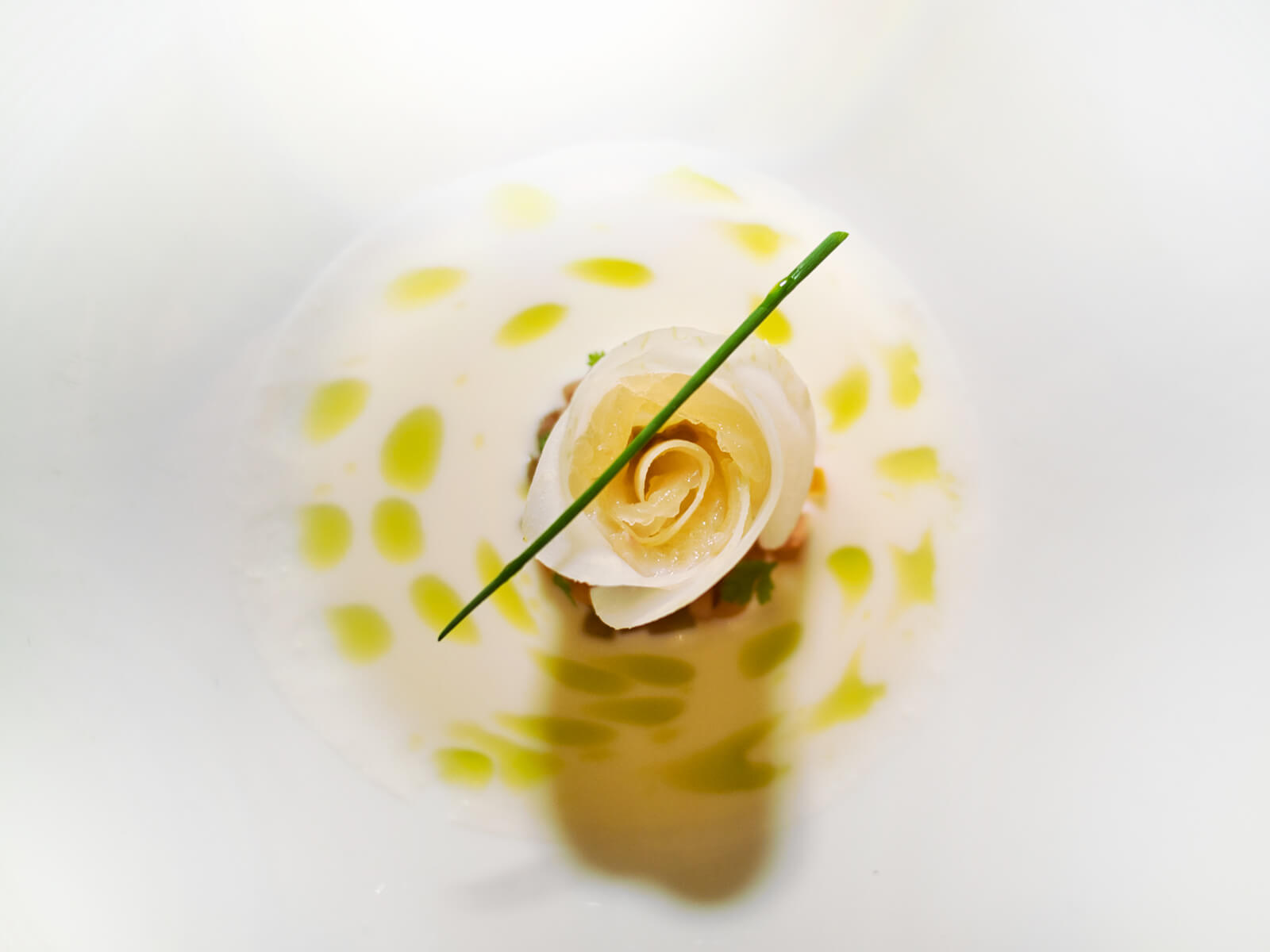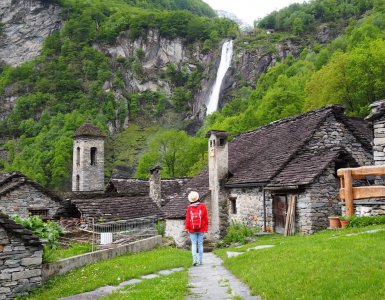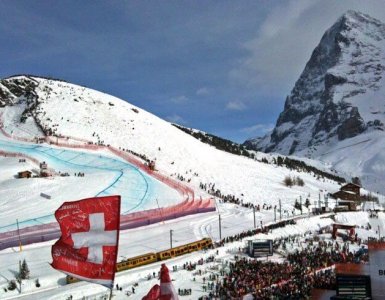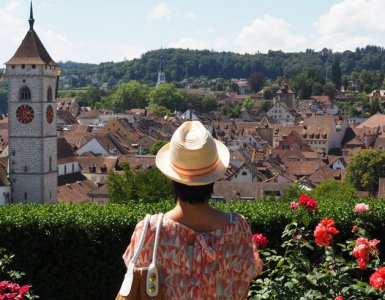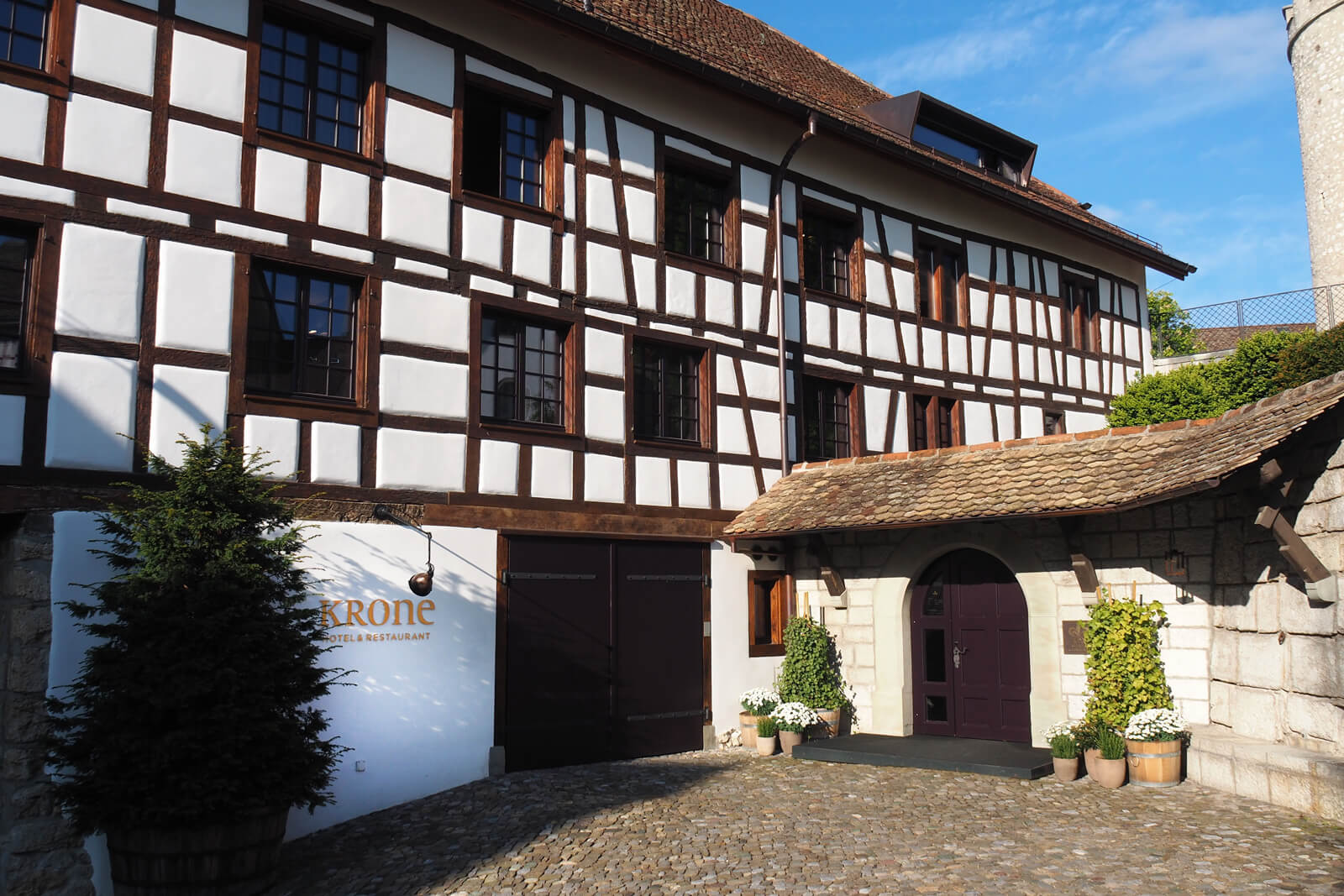
From traditional ryokans in Japan to the Jules Verne Hotel inside the Eiffel Tower, hotels with the prestigious Relais & Châteaux emblem are as unique as their locations and owners.
I am about to embark on a three-day press trip with Relais & Châteaux from Switzerland’s north to the south. I will be peeking into gourmet kitchens, visiting farms, tasting wine, and counting the stars while sleeping in three different beds.
Our host is Benjamin Dietsche, the (now former) director of Relais & Châteaux Switzerland. He explains that Switzerland is home to two dozen member hotels. They are located in all linguistic regions, from Geneva to St. Moritz and Lugano. And they range from city hotels to former palaces.
As I learned firsthand, the core idea of Relais & Châteaux is to preserve the essence of hospitality and cuisine. This means that the kitchens still use yesterday’s tried and true culinary techniques. But just as much, it means that the front of the house welcomes guests as friends.
Relais & Chateaux Hotel Krone Regensberg
My first home for the night is the upscale Hotel Krone Regensberg. The quaint town of the same name is still relatively unknown despite its close proximity to Zürich.
Towering above a vineyard, Regensberg has a strategic location with supreme views of the flatlands below and the mountains in the distance. Yet when I first mentioned the name to friends, few knew this so-called "rainy hill." That's strange because the history of Regensberg dates back to the 13th century!
Hundreds of years later, the town with its 57-meter draw well still appears in top shape. At Oberburg, all the houses are attached without gaps in between, forming a defensive wall against intruders. But during the course of time, this style of architecture had its drawbacks, too.
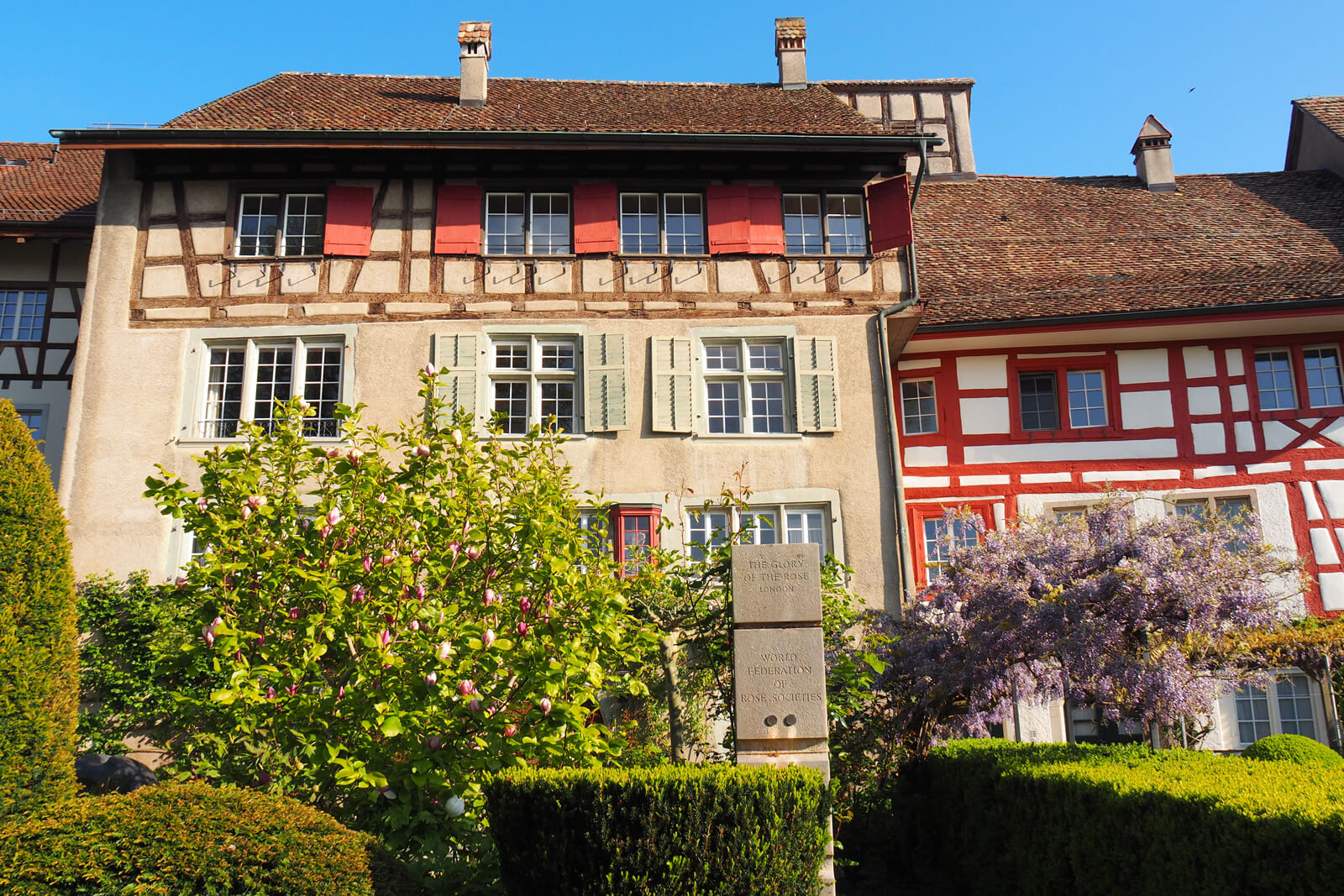
More than once in history, Regensberg was plagued by arson.
Take the year 1540 when two-thirds of the Oberburg section was lost to a fire, including its watering hole called “Krone.” At the time, there was no water to fight the fire, so the townspeople used their wine reserves instead...
After being rebuilt and extinguished yet again in 2011, the Relais & Châteaux Hotel Krone Regensberg is here to stay for good. The architecture is as unique as each of the nine rooms and suites. The historic part of the hotel showcases exposed supporting beams. And where the wooden floor changes to polished concrete, the newly constructed house begins.
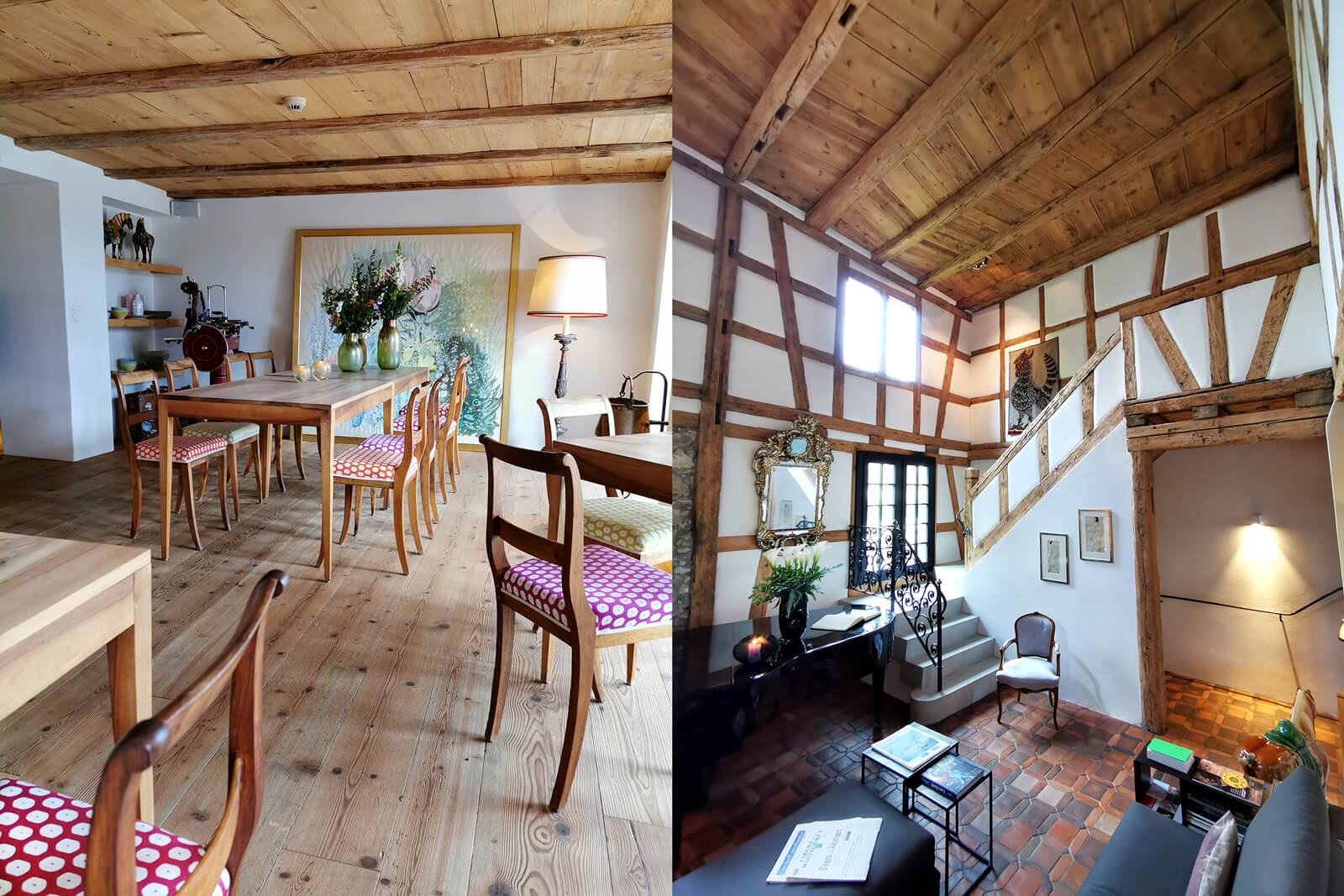
Each hotel room has been given its own character within these old structures.
My Bergblick mountain view room features a truly widescreen window. The slit reminds me of a medieval embrasure, but nothing is evil. The lofty room for “visionaries and aesthetes” is entirely encased in larch wood from the region, giving it a warm and soothing feel.
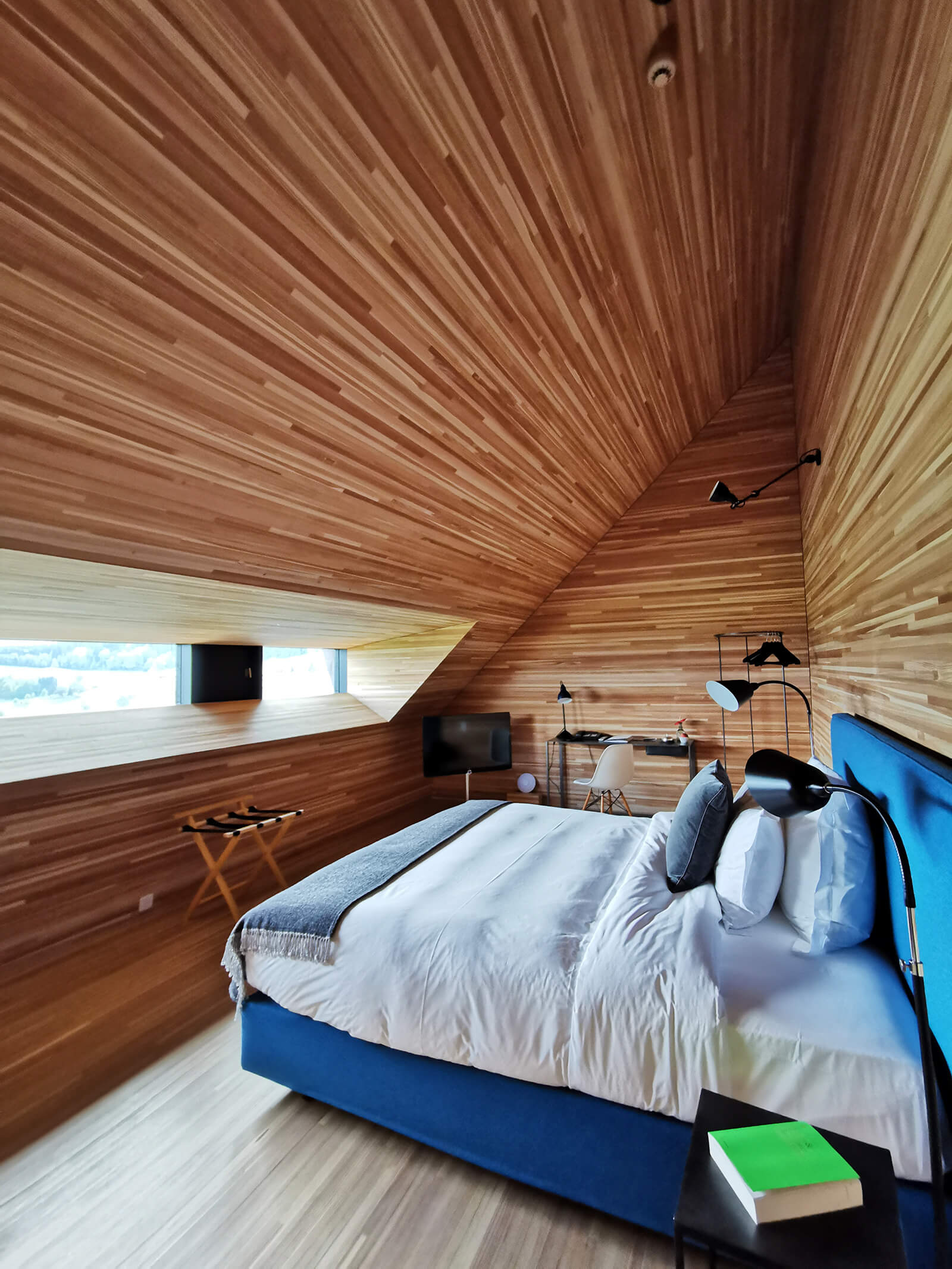
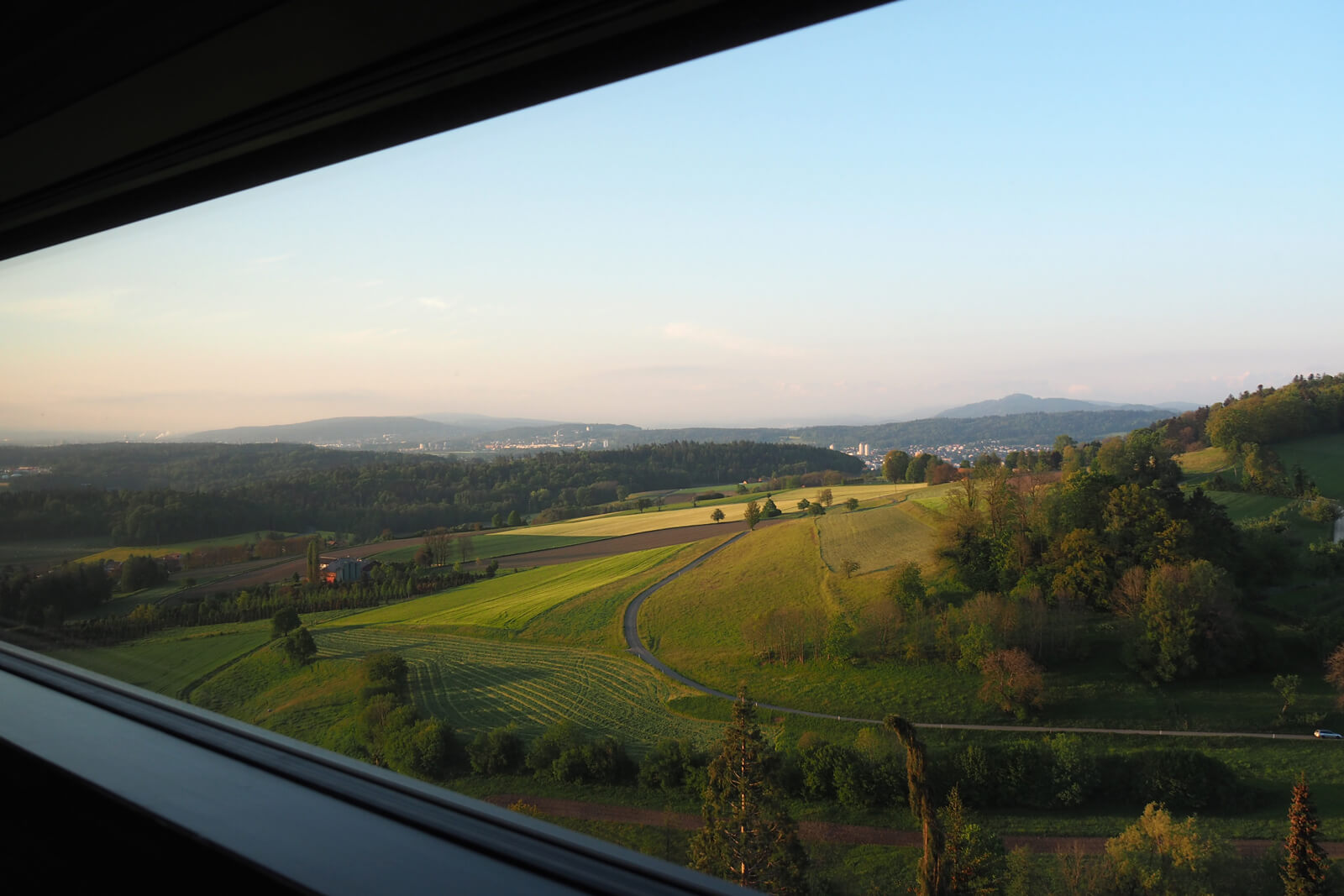
What's for dinner at Restaurant Taverne?
I also get the same warm vibes from the hosts and hostesses at Hotel Krone Regensberg. They are approachable, courteous, and passionate about their house. Executive Chef Ale Mordasini who is helming Restaurant Taverne presents an honest four-course dinner. And to my delight, he grabs a chair and joins our party.
My favorite dish features locally grown white asparagus, grilled, in a mousse of morel mushrooms. "I've gathered the garnishings in the nearby fields," the chef explains. This dish proves that Chef Ale lives the Relais & Châteaux vision of sourcing locally.
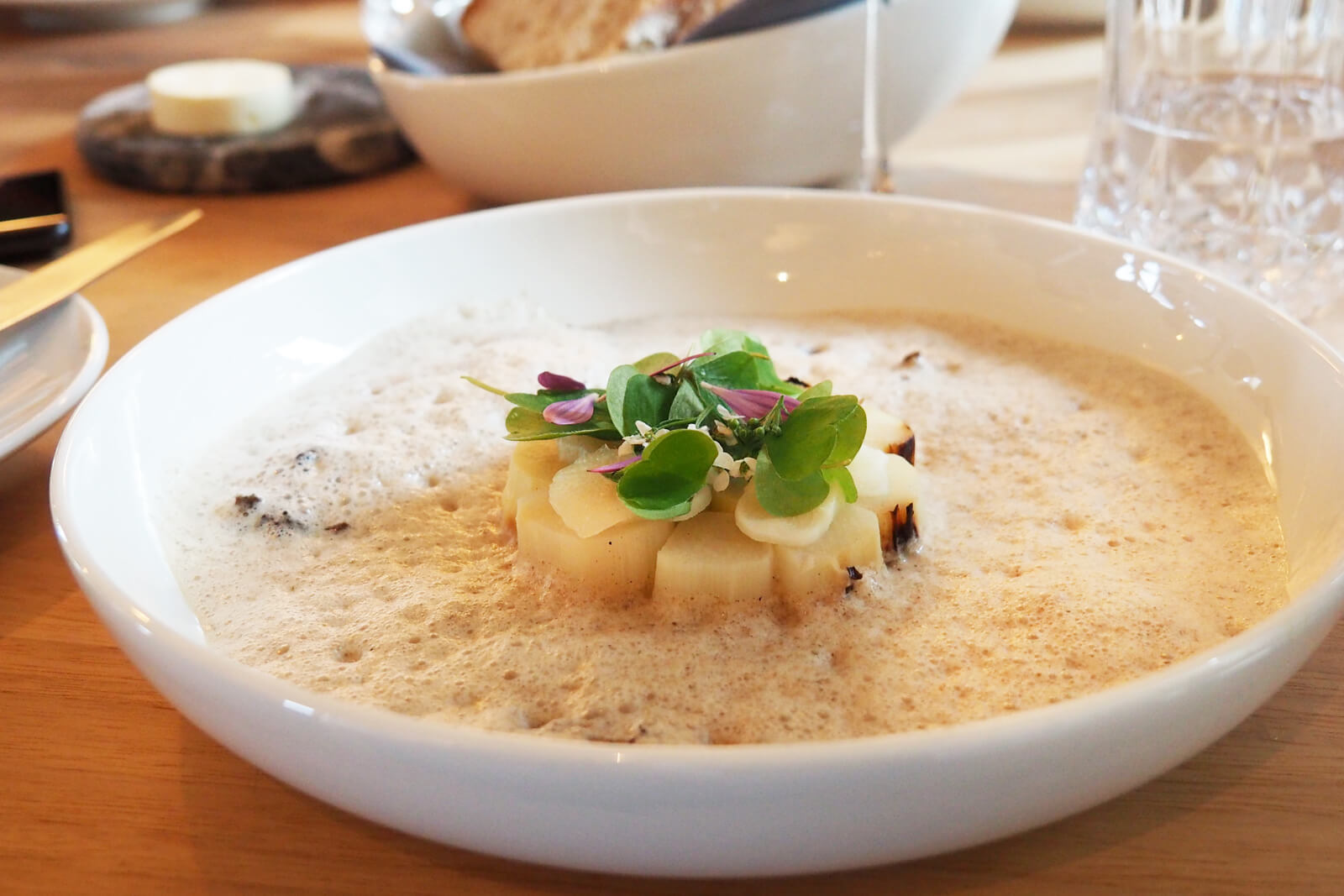
The hotel also buys apple juice, eggs, dried meat, and beef from the Loohof organic farm just minutes away. And all the cheese is supplied by Switzerland’s top maître fromager, Rolf Beeler. For shows that breakfast cereal is a visual feast:
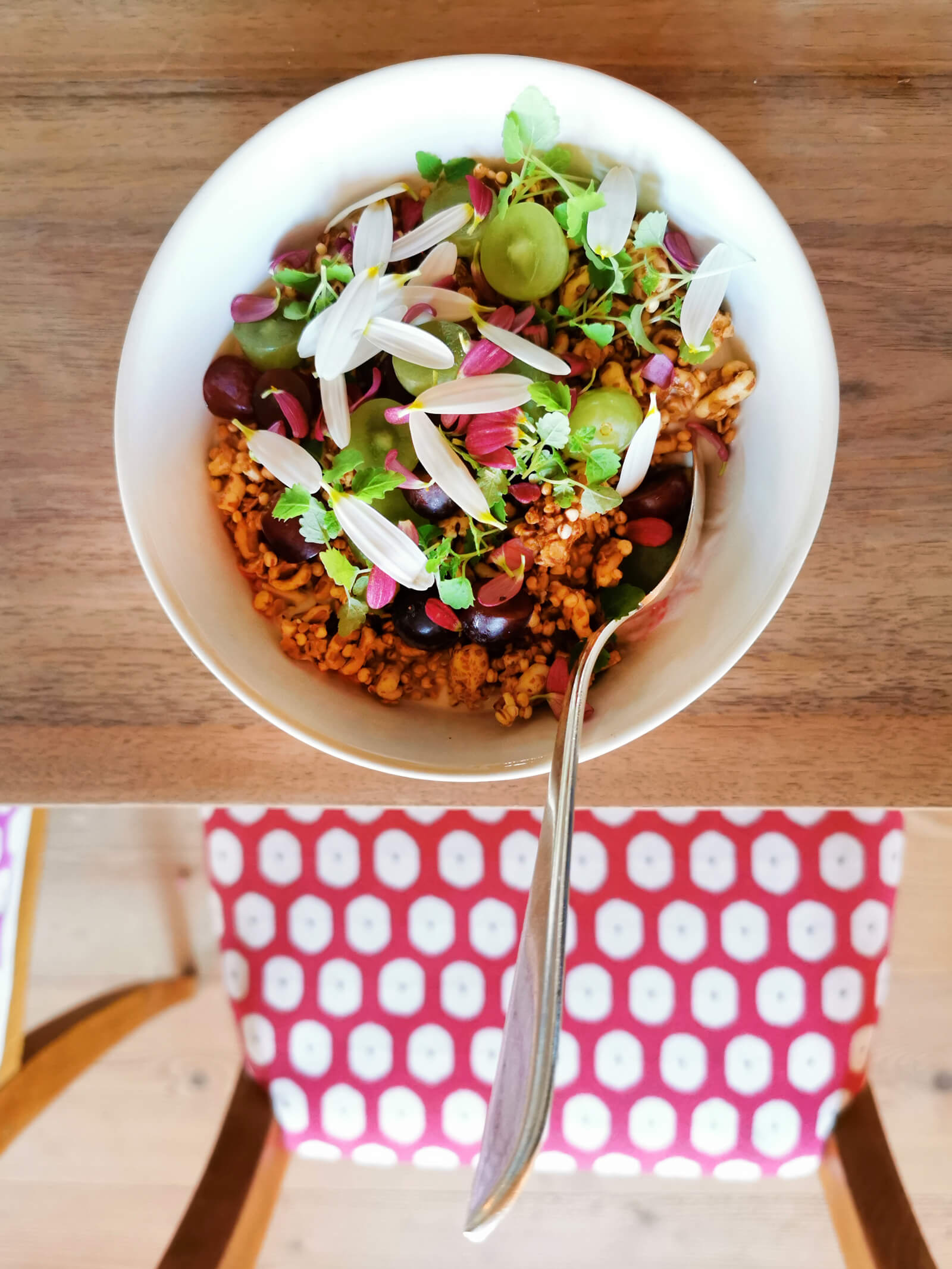
Member hotels strive to be a part of the regional culinary culture. By paying their suppliers fair prices, they want to enable the production of chemical free foods - good for the environment and the health of their guests.
Castello del Sole Beach Resort & Spa in Ascona
The following day in Ascona, it feels like coming home. I have previously stayed at the five-star Castello del Sole with its vast property bordering Lago Maggiore. And the hosts are welcoming me by name, inquiring about the trip and accommodating me.
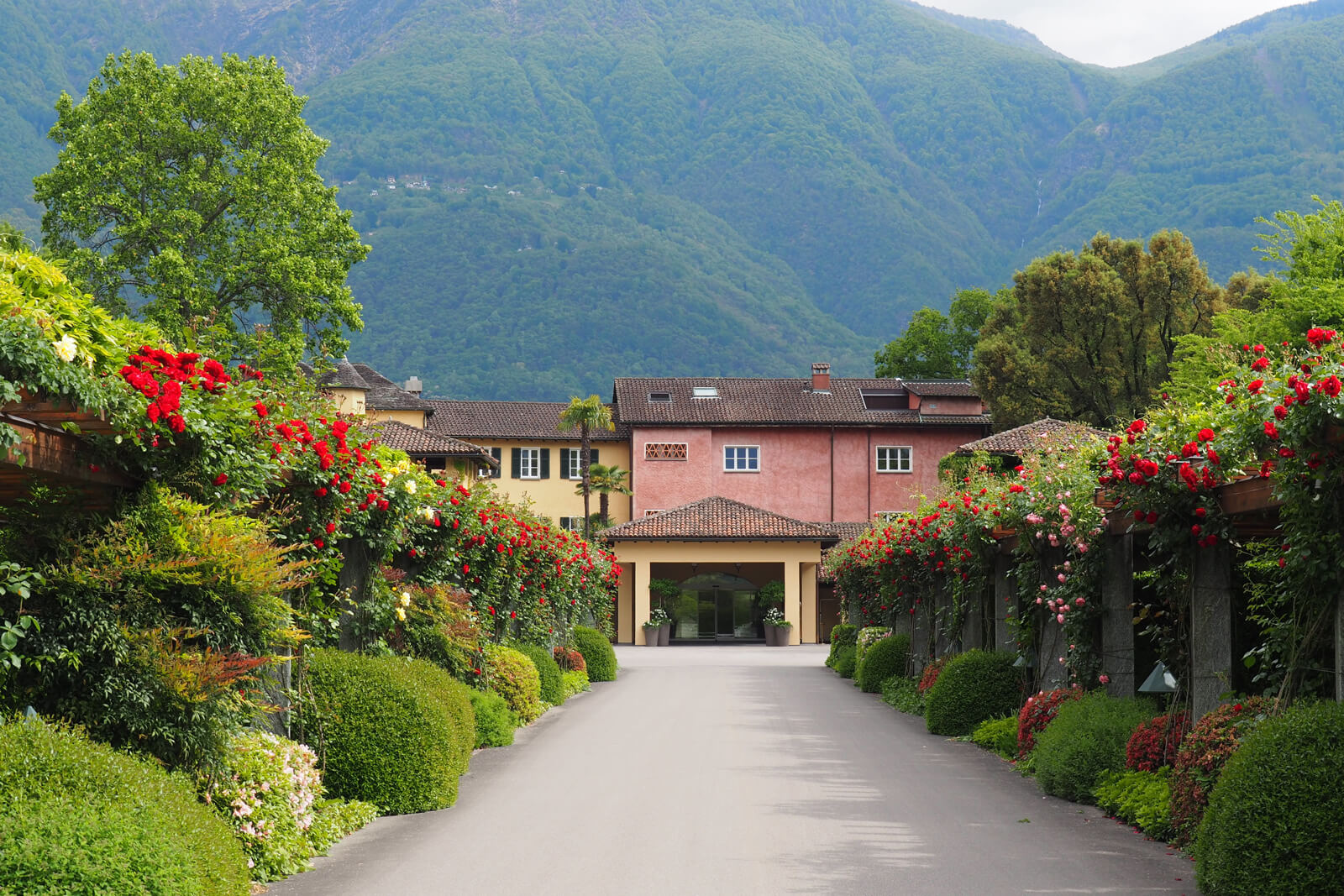
It' i's in the name: Castello del Sole resembles a sun-drenched castle. Here, luxury is akin to having abundant space and thus privacy. For instance, to get to the private beach from my room, I would first walk past the outdoor kitchen and the pool. Then, across a seemingly endless lawn with the donkey pasture on one and the bird sanctuary and rice fields on the other side.
The Castello del Sole is truly surrounded by nature.
And out in the midst of it, Executive Chef Mattias Roock has set up a cooking station. Roock was named Switzerland’s chef of the year in a prestigious ranking.
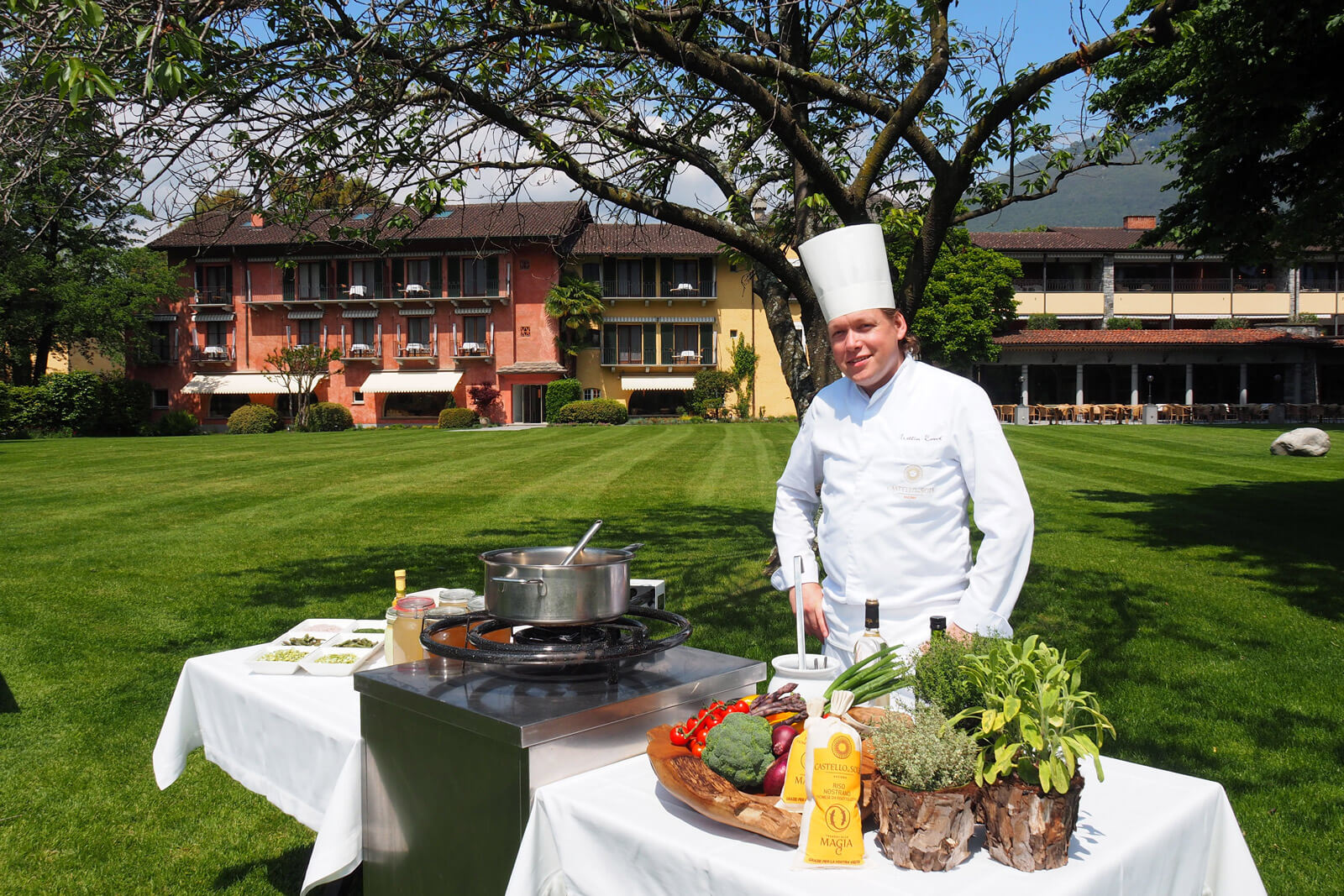
Since the hotel runs its own agricultural farm in the river delta, Chef Roock has immediate access to everything from olives to honey or wheat.
While Ticino has a culture of risotto, this rice field is truly unique in that it is among the northernmost fields in Europe. (At the time of this writing, I have learned about ÖsterReis which is cultivated further north at Lake Neusiedl in Austria.)
But the point is that the setup of the Castello del Sole and Terreni alla Maggia is the definition of "farm to table." It cannot get any closer than this! And thanks to limiting the transport of foods, the hotel manages to reduce CO2 emissions.
Today, Chef Roock is building up his famed asparagus risotto from scratch: olive oil, onion, white wine, local rice. The plates are made of local Ticino rocks that the chef has single-handedly collected in the nearby River Maggia. Roock: "Once, a guest wanted to buy a plate and so I had to return to the riverbed to find a new rock..."
That's some passion right there! The risotto is served and in this beautiful setting with views of the rice fields, I can now quite literally taste what the concept of "farm to table" is all about.
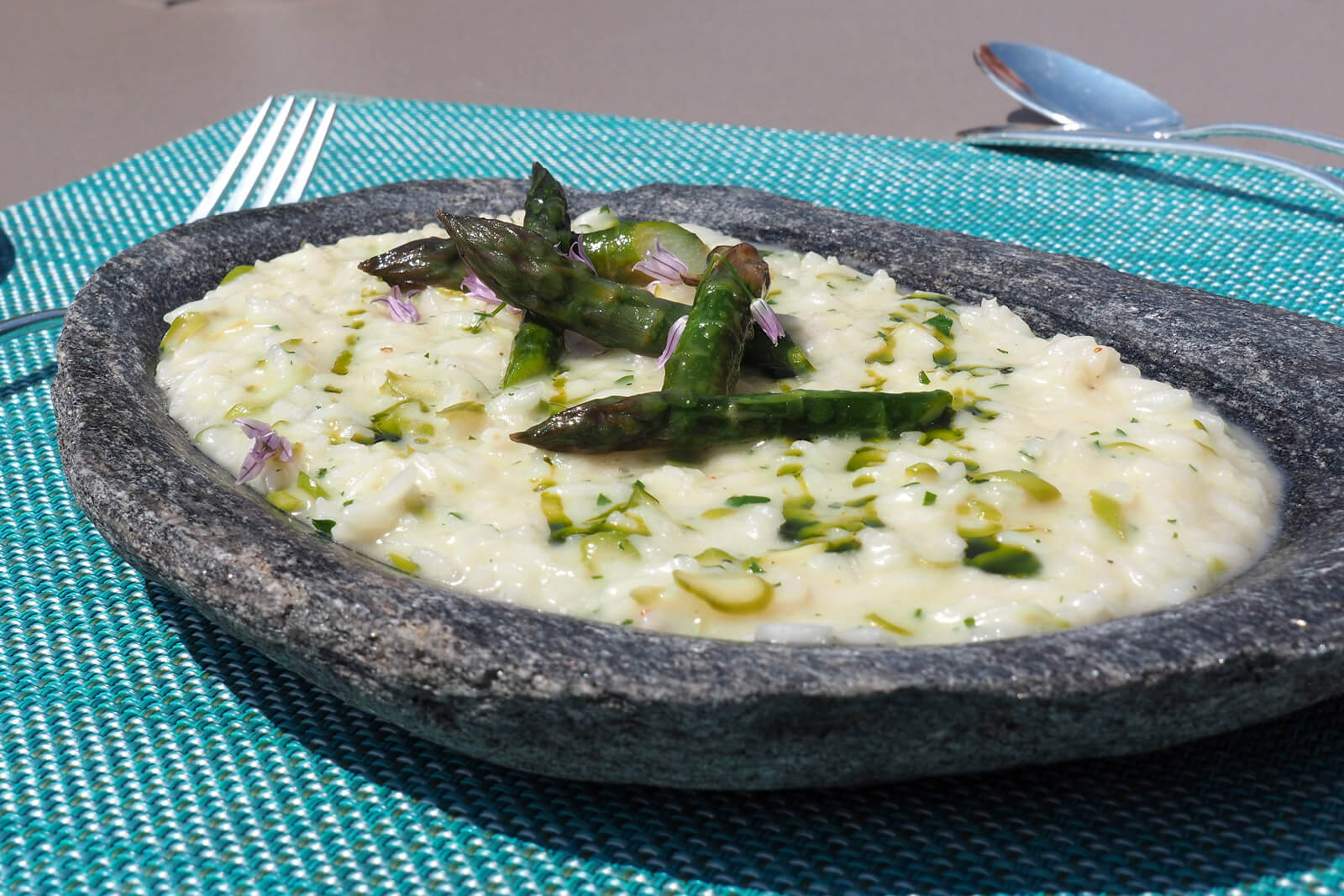
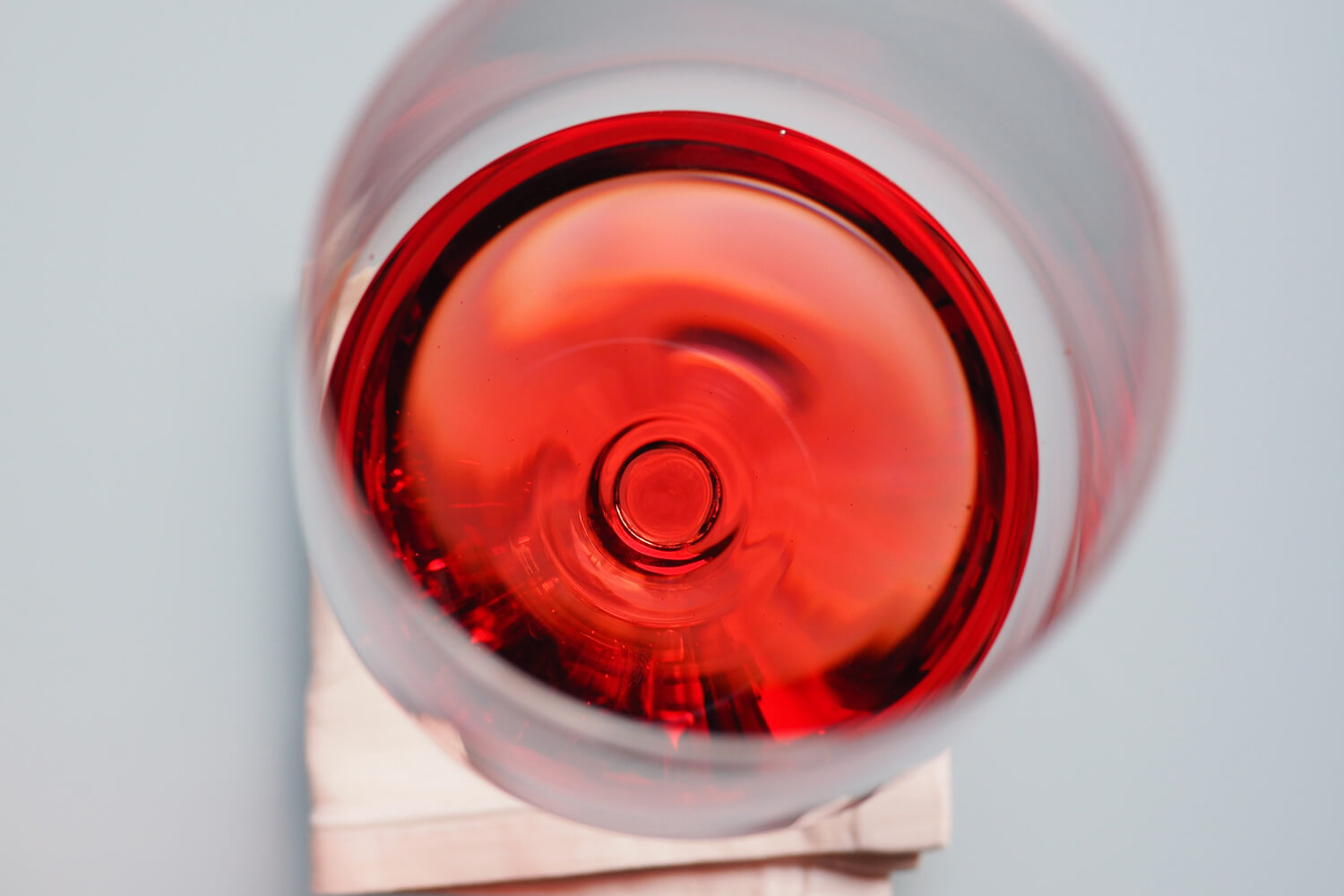
Relais & Châteaux hotels are about giving each guest a personalized experience. The check-in experience is a good example of this.
During this trip connecting three Relais & Châteaux hotels, I was only asked to check in once! Every day, my credentials and personal preferences magically traveled to the next hotel. (Only a millet pillow gives me deep sleep. And you bet there was one waiting for me in each bed...)
Hotel Villa Principe Leopoldo & Spa in Lugano
Our final hostess is Barbara Gibellini, General Manager at the five-star Villa Principe Leopoldo overlooking Lugano. Only minutes after meeting her, Ms. Barbara seems like an old friend. She likes everything Japanese, so we click right away!
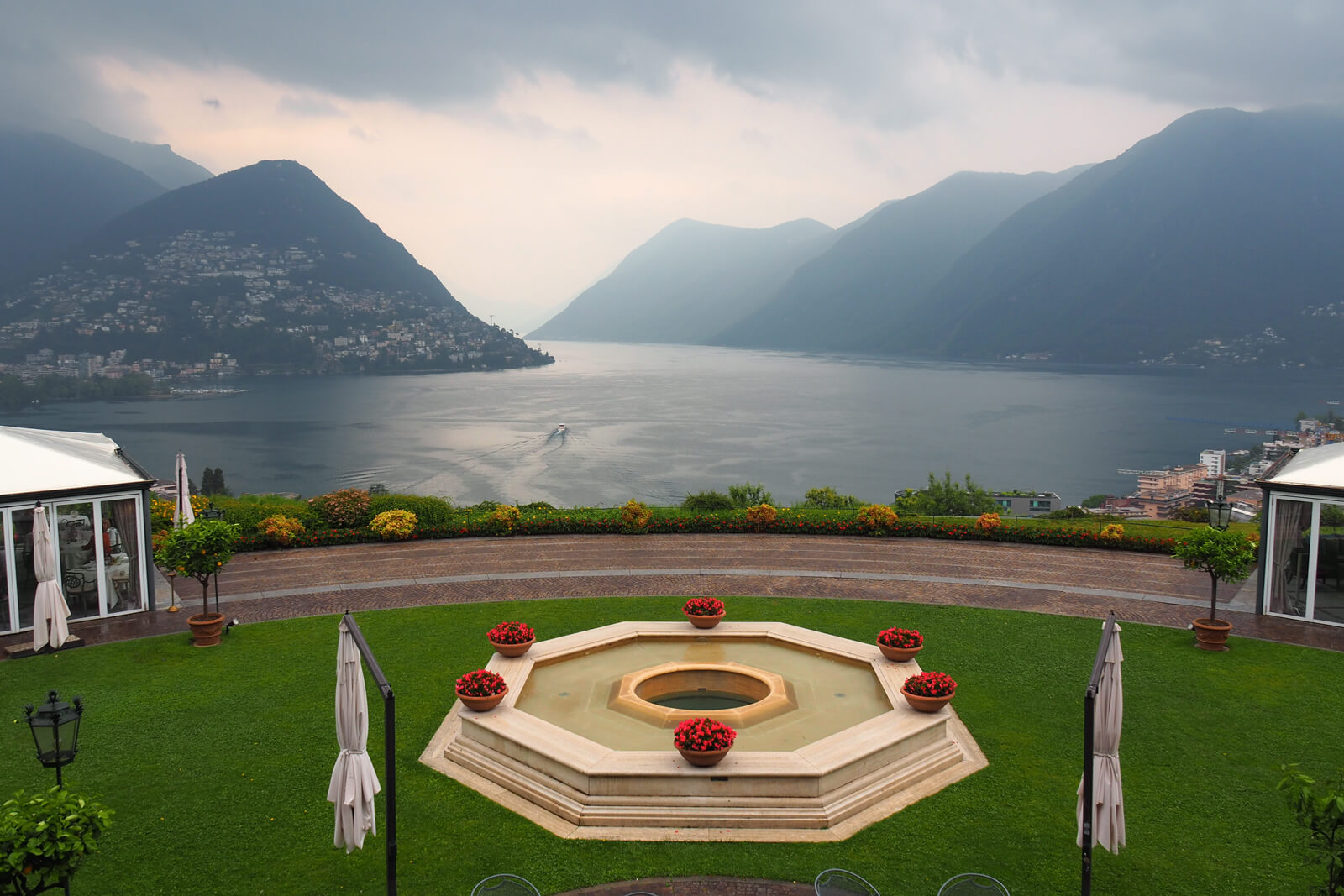
Aptly named, Villa Principe is no less than the former residence of a prince. But today, it is a stately luxury hotel surrounded by tropical plants.
Beyond the palm trees lies a small vineyard, and the hotel’s sommelier, Mr. Speziale, gives us the low-down. In my notebook, I write down: "Nicely groomed vineyard, just steps from the hotel. A good example of paying tribute to the region."
At the wine tasting back on the hotel terrace, each journalist receives four wine glasses: one each for white, rosé, red and bubbly.
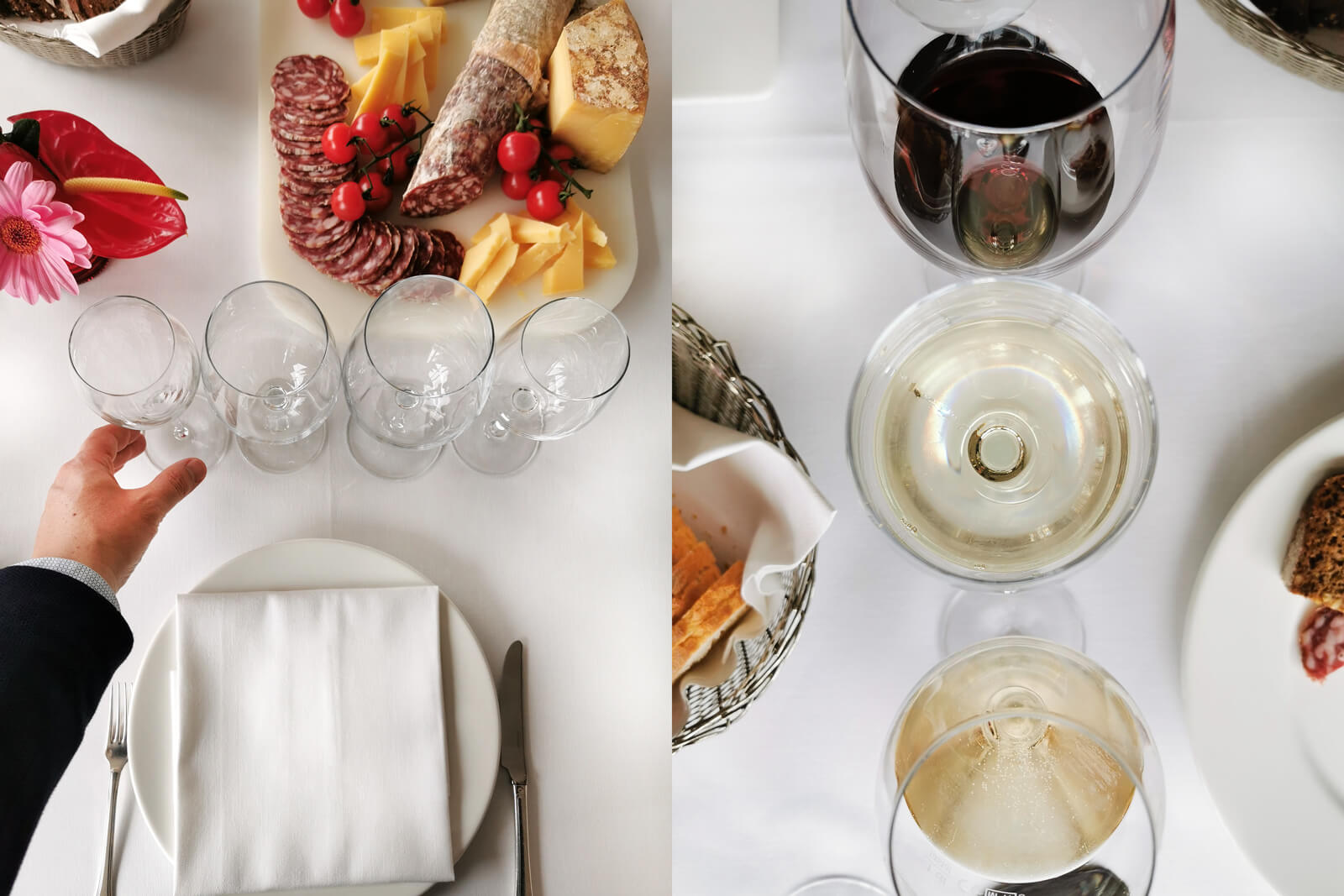
Mr. Speziale talks about his wine portfolio with lots of passion and profound knowledge of each producer. My favorite white is Brivio Brut from Pinot Blanc and Merlot; the winery is just around the corner in Mendrisio.
There is a good reason why the in-house Restaurant Principe Leopoldo has so many positions on the wine list. For nearly 30 years, Executive Chef Dario Ranza has established a style of authentic cuisine that lets each ingredient shine - and requires just the right wine pairing.
Chef Ranza is a rather quiet person; he speaks with his eyes and through his dishes more than with words. This makes it all the more special that he takes his time to sit down and talk about his long tenure. It is a pivotal moment. His young prodigy, Cristian Moreschi, will inherit this gourmet temple shortly after my visit.
La Caldera Organic Farm
Moreschi has been learning everything it takes to continue the legacy. And he has been cultivating the relationship with local suppliers.
Here, the chefs are pictured, their butcher of choice, and the local farmer. Chef Moreschi is on the left, and Chef Ranza is on the right:
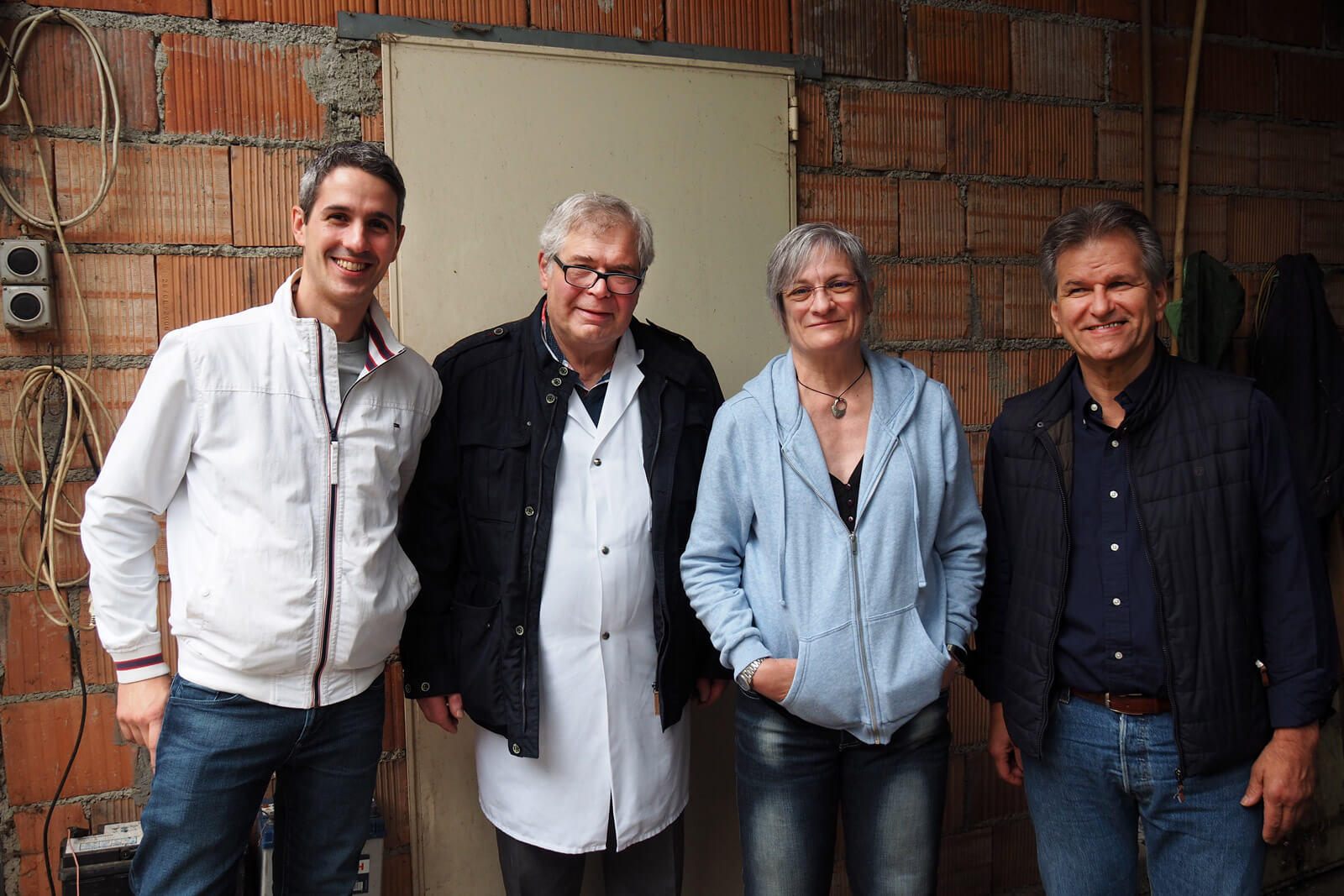
The organic farm, La Caldera, is located just outside of Lugano in Ponte Capriasca. For the past decade, they have been dedicated to preserving an endangered Swiss cattle breed (Rätisches Grauvieh "Albula"). It goes without saying that their cattle is exclusively grass-fed on the organic pastures. This here is a cattle they grow for Japanese wagyu beef:
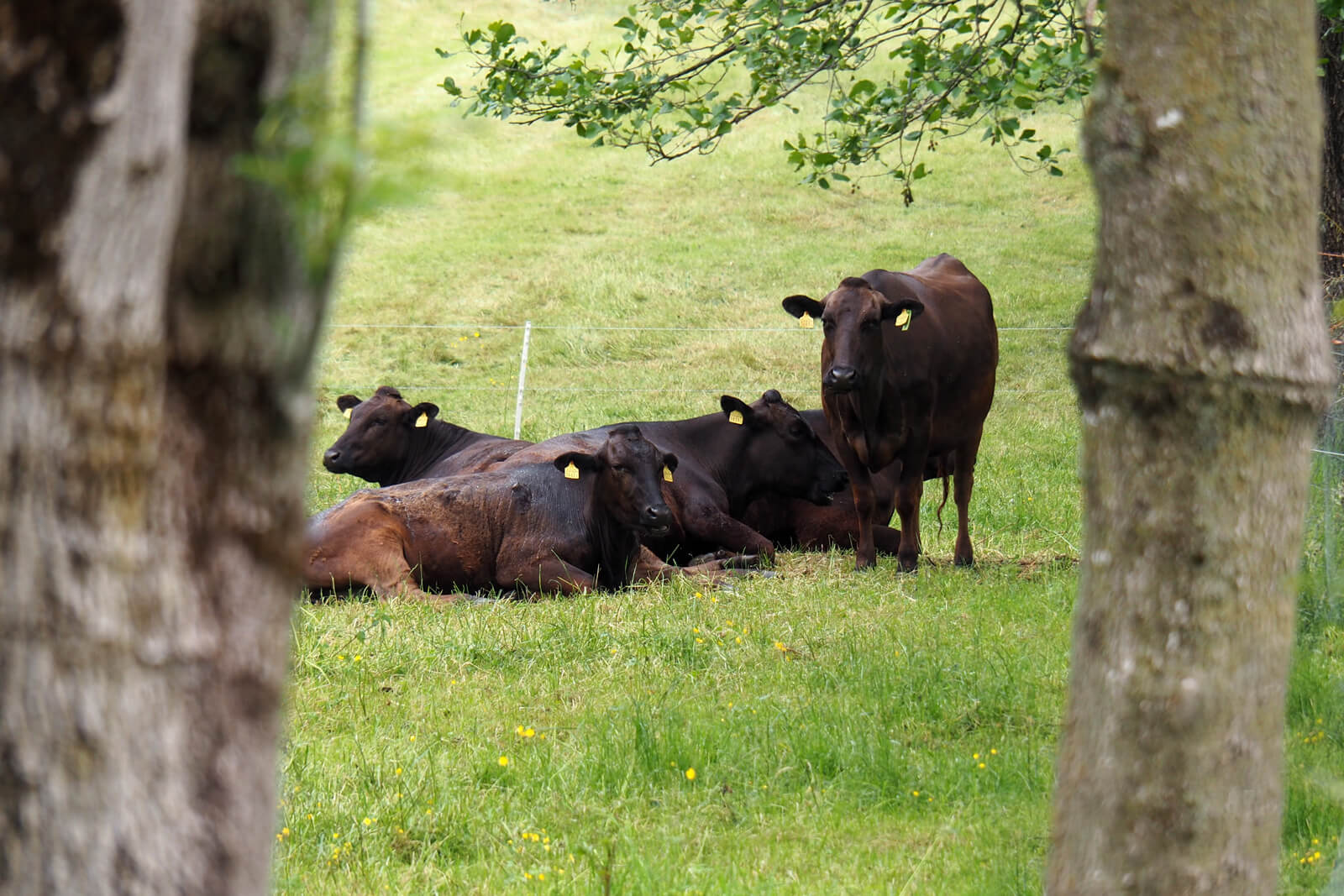
At dinner, I finally got to try Chef Ranza's dishes.
Each course is unbelievably tasty and full of aroma. The flavors are honest, light, and a feast for the senses. My favorite part about his cuisine? The colorful spark that each ingredient creates on my plate:
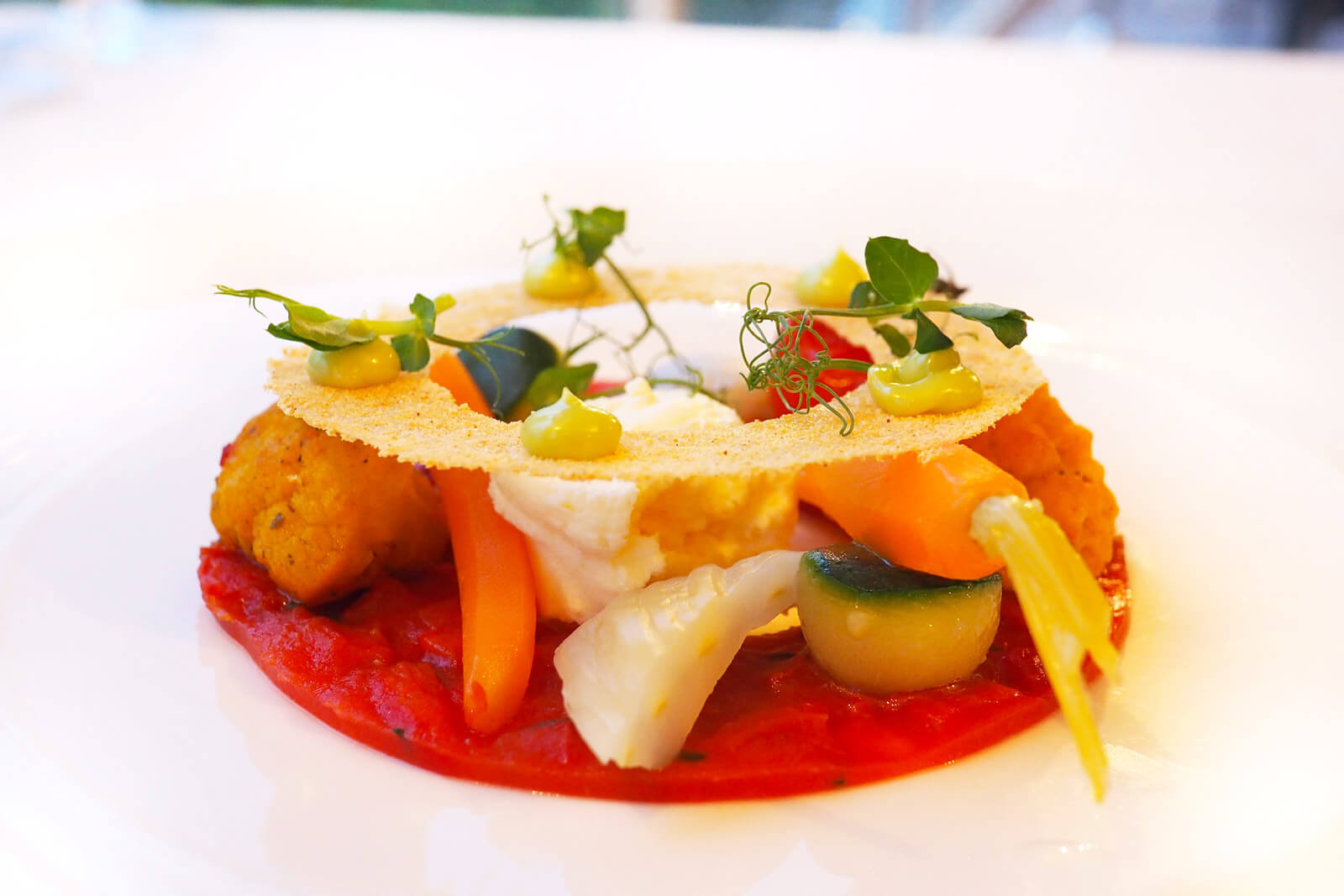
Thank you, Relais & Châteaux Switzerland, for showing me three stellar hotels I can wholeheartedly recommend.
(For the purpose of this article, I was invited by Relais & Châteaux to spend one night each at the before-mentioned hotels, including all meals.)

